The eastern part of Hokkaido feels somewhat far away and wild even for the the locals. From my first visit to Shiretoko soon after it was registered as a World Natural Heritage Site, I still remember vividly the stunning coastal sceneries of rocky cliffs and rivers blackened with a school of salmon and trout swimming upstream. It was something I had never seen before, and I came home absolutely amazed by the wilderness of the island I grew up in.
Hokkaido Guide Stories – Japan’s Far East with Ayaka
Guide Story
By Ayaka
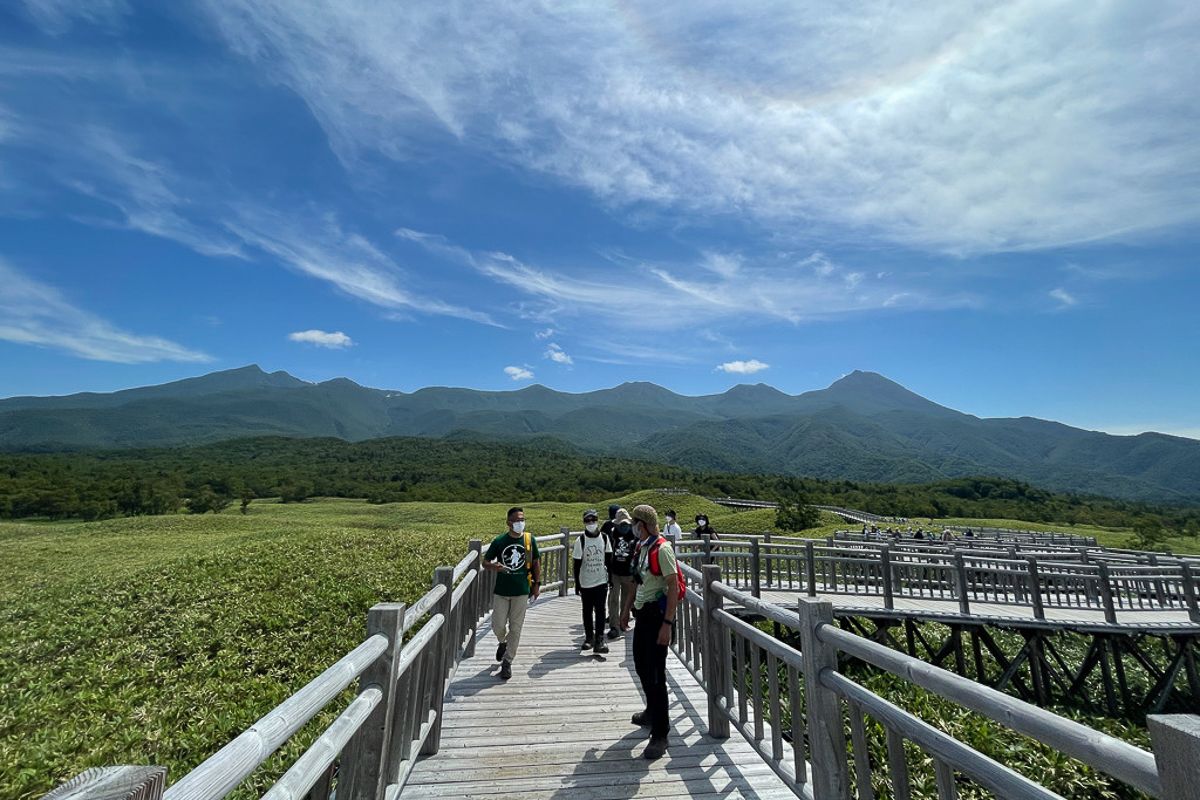
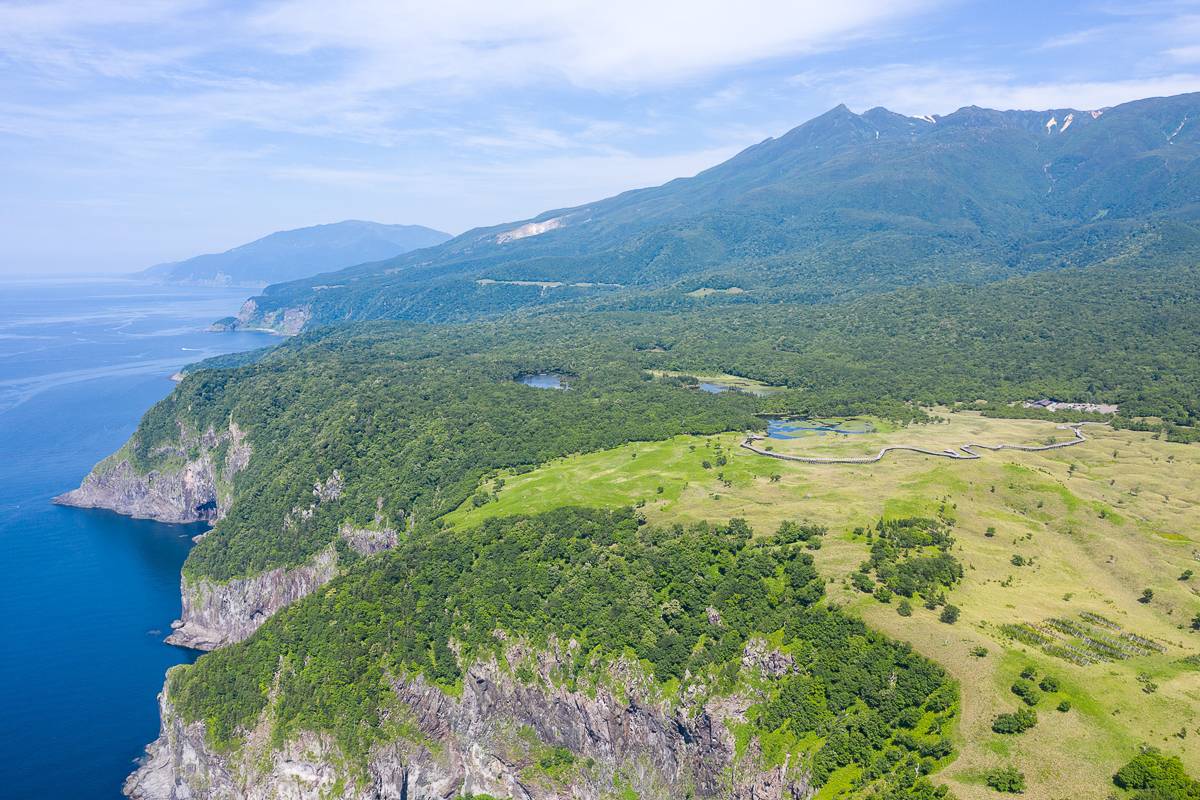
On our Japan’s Far East Wildlife & Adventure Tour, we visit three national parks; Kushiro Shitsugen, Akan-Mashu, and Shiretoko. The three are uniquely different, from the vast wetland ecosystem, caldera lakes to the peninsula, which largely remains untouched.
What I like the most about this area is the high chance of encountering the wildlife and also the closeness of the people who are living with it.
Gen Terayama is one of them, a local guide who lives just on the doorstep of Shiretoko. Guides Gen and Kazu took charge of our group this time, consisting of fellow travellers from Hokkaido. They made the luckiest team ever in spotting all the kinds of wildlife on our wish list; Brown bear, Sperm whales, dolphins, Red-crowned cranes, Blakiston’s fish owl, and sea otters.
Read on to find out how!

Day 1 – Shitsugen connecting the sea and the land
Kazu and I left Higashikawa early in the morning to meet the group at Kushiro Station. This summer has been particularly a hot summer for our region, and this day was no exception. Honbetsu, where we had a break, was already going over 30 degrees Celsius in the morning. We were eager to escape from the heat to Kushiro, which is famously known for the cool summer. (Perhaps a guilty-feeling for Kazu leaving the family behind!)
We called in at Washo Market for lunch at a popular spot before joining the group. Washo Market is a local seafood market famous for “Katte Don”. Visitors get a bowl of rice and choose sashimi (sliced raw fish) to make their own don (rice dish in a bowl) however they like it.
From mini to giant, from budget to luxurious, the choice is yours depending on how hungry you are and how much you wish to spend. This is a great place to practice some basic Japanese and dive into the localness from the Day 1 of your adventure in Hokkaido.
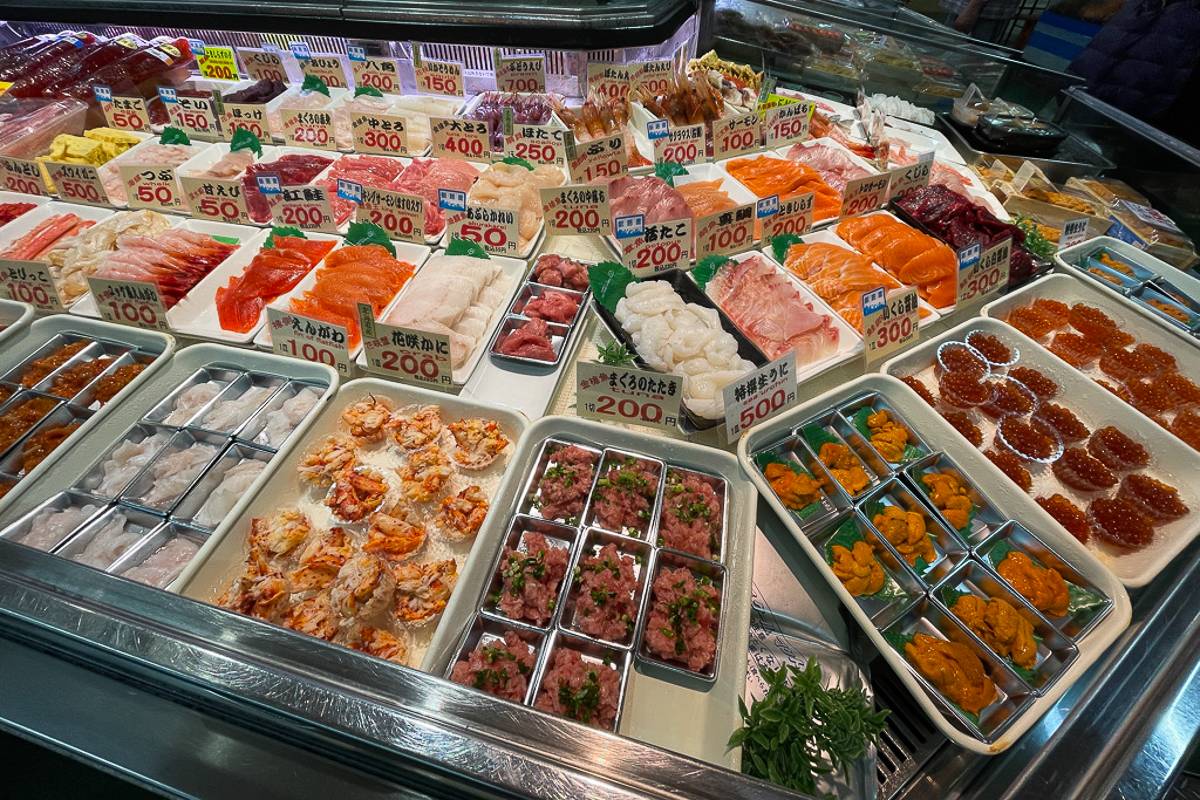
As soon as we were all together at Kushiro Station, the group headed for the Kushiro Shitsugen Observatory to take in a panoramic view of the vast wetland and a walk in the native forest. Kushiro Shitsugen is the largest wetland ecosystem in the country, extending 25km from east to west and 36km from north to south. The Ramsar Convention first recognised its significance in 1980, and later the area was designated as a national park in 1987.
Kushiro Shitsugen at a glance is kind of unremarkable I have to say, as it is so vast and flat, it is hard to recognise the marvel of the wetland formation.
Kazu made a call to have a quick tiki tour to the Onnenai Visitor Centre, which turned out to be quite insightful. Just along the boardwalk built over the wetland, we measured the depth of a bottomless pond using the provided wooden stick. It was way deeper than the height of an NBA player, more than 3 metres in depth! The existence of the boardwalk felt more valuable instantly; imagine walking here without any assistance!
We checked into our accommodation in Tsurui Village in the late afternoon, and we were stoked to discover a beautiful addition made to the lodge, “Wada Masahiro Art Square”. The place felt like a hobby shed of the owners, the Wada family, who like bikes, good wines and photography. The gallery displays the work of Wada san, a professional photographer, including a series of photos of Red-crowned Cranes (Tancho) in the four seasons.
This is a place anyone would enjoy hanging about in the evening, and is a nice way to immerse in the beauty of Tsurui captured by a local artist.
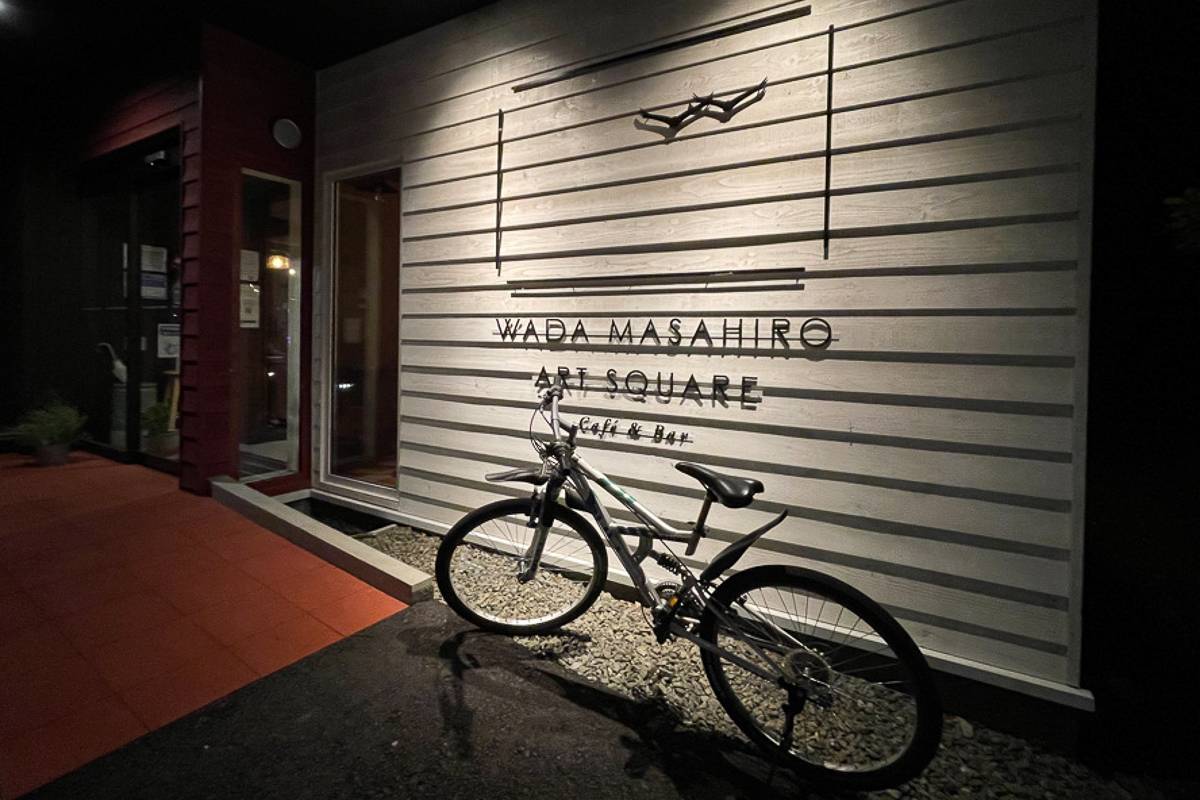
Day 2 – Canoe on Lake Kussharo and the River Kushiro
The day started with gentle steady rain; much-needed for the crops and the hay growing in the region. After a hearty breakfast, we left Tsurui for Lake Kussharo, a part of Akan-Mashu National Park.
We were joined with three canoe guides at the meeting point in Wakoto, where we took off on our full day canoeing journey exploring the Wakoto Peninsula and the Kushiro River sourcing the Kushiro Shitsugen downstream.
Tsuchida san, the leader guide, explained to us where we were heading for the day, and told us that the wind may pick up when we made it to the other side of the peninsula. The plan is to come back to the same point by paddling around the entire coast, exploring Oyakotsu Jigoku geothermally active hot spots.
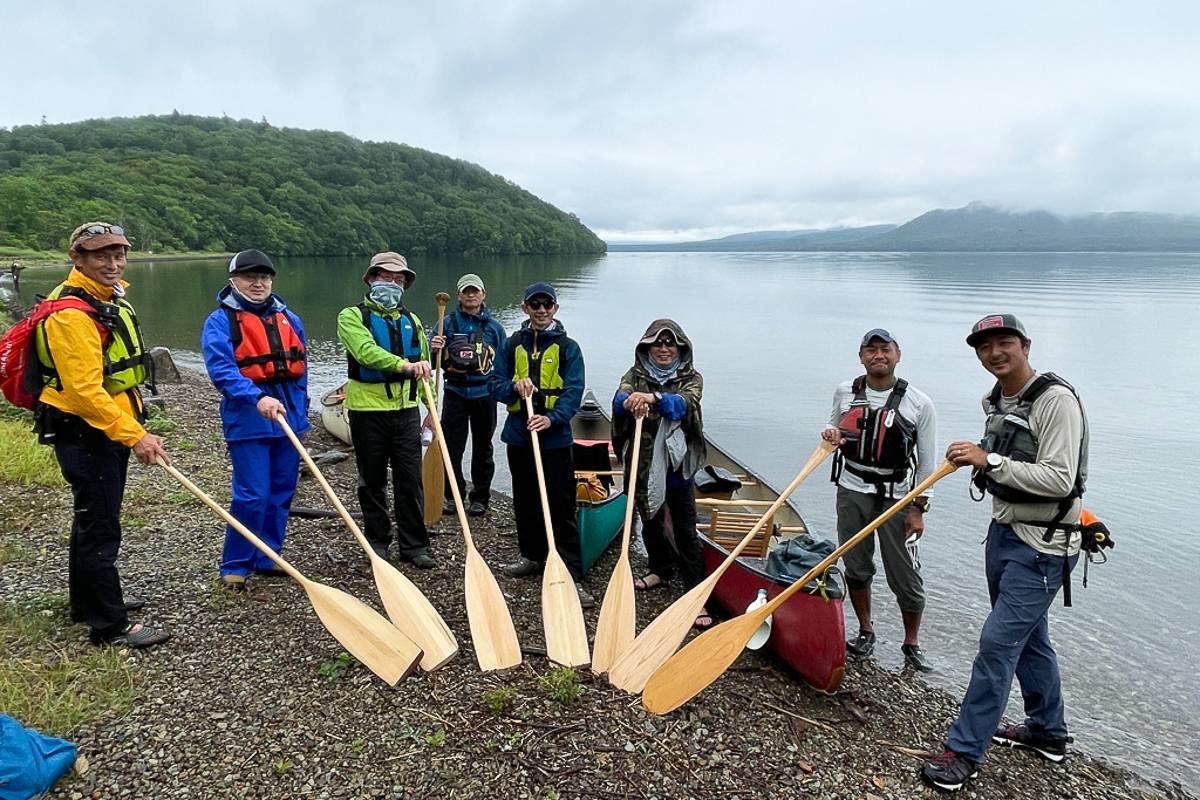
We split up into three Canadian canoes, and were soon able to paddle in sync. The silky lake surface was very pleasant to paddle on in Canadian canoes, in the stillness enclosed among the forest. The lake was so clear we could see some baby dace swimming joyfully.
We stayed close to the shoreline, and after making a few corners, there we found the fumaroles of Oyakotsu Jigoku, but still no wind!
On landing and getting off our canoes at Oyakotsu, we could feel the heat generated from the earth on our bare feet here and there. Small shrimp came flocking around our feet, which was ticklish but bearable. Gen decided to have a swim here (making me regret that I didn’t wear a swimsuit under my clothes), while we were waiting for our morning tea to be cooked; eggs boiled in the hot spring of Oyakotsu.

We continued to canoe around the Wakoto Peninsula with no wind at all, and made it home safely. It was nice to taste local produce over a picnic lunch, and I can’t help but mention the hand ground drip coffee prepared by our canoe guide Tsuchida san. The outdoor air makes pretty much everything scrumptious for me, but the coffee was exceptional! Some of us bought a packet of coffee beans for souvenirs, a special blend produced by the canoeing team.
The afternoon saw us canoeing the Kushiro River, which flows out from Lake Kussharo, through Kushiro Shitsugen and eventually onto the Pacific Ocean over 150km. We paddled approximately 8km in the afternoon to the Biruwa Bridge. We were so excited to see Crested Kingfishers and Gray Herons, flying and racing ahead of us multiple times.
The hot springs at our accommodation in Kawayu Onsen felt very welcoming after canoeing all day in a light shower. Though the sulphur onsen is stinky, the effects are known to treat skin irritations and infections, making Kawayu Onsen a popular destination for therapeutic bathing historically. Be sure to take off silver jewellery before soaking in the onsen here, as the sulphur tarnishes the silver black!
Day 3 – Sulphur mountain Atosanupuri and transfer to Shiretoko
We kicked off the day with a morning walk right from the inn where we stayed at Kawayu Onsen. Strolling through the quiet streets with steam rising from the street gutters and waterways, we could feel the liveliness of the earth and volcanic activities surrounding us. Our goal for the morning was the sulphur mountain Mt Iouzan, the Ainu name Atosanupuri, the very source of the hot springs of Kawayu.

From the Kawayu Ecomuseum Centre, the walking trail leads through the beautiful native forest primarily dominated by conifers, such as fir and spruce. As we journeyed on towards Atosanupuri, we could see the obvious change in the flora; Silver Birch, Rhododendron and Japanese Stone Pine start replacing the vegetation, with an opening of the sky. In the distance, the stark mountain made an appearance, with no vegetation but dressed in yellow lumps of sulphur.
After walking 2.5km, we reached Atosanupuri and took some time observing the sulphur lumps and fumaroles. The hot springs are gushing from the vents here too, we were tempted to feel the temperatures by carefully putting our hands over the vents in the air. We walked back on the same way as we came, to Kawayu Onsen, and then continued in the van to Shari.
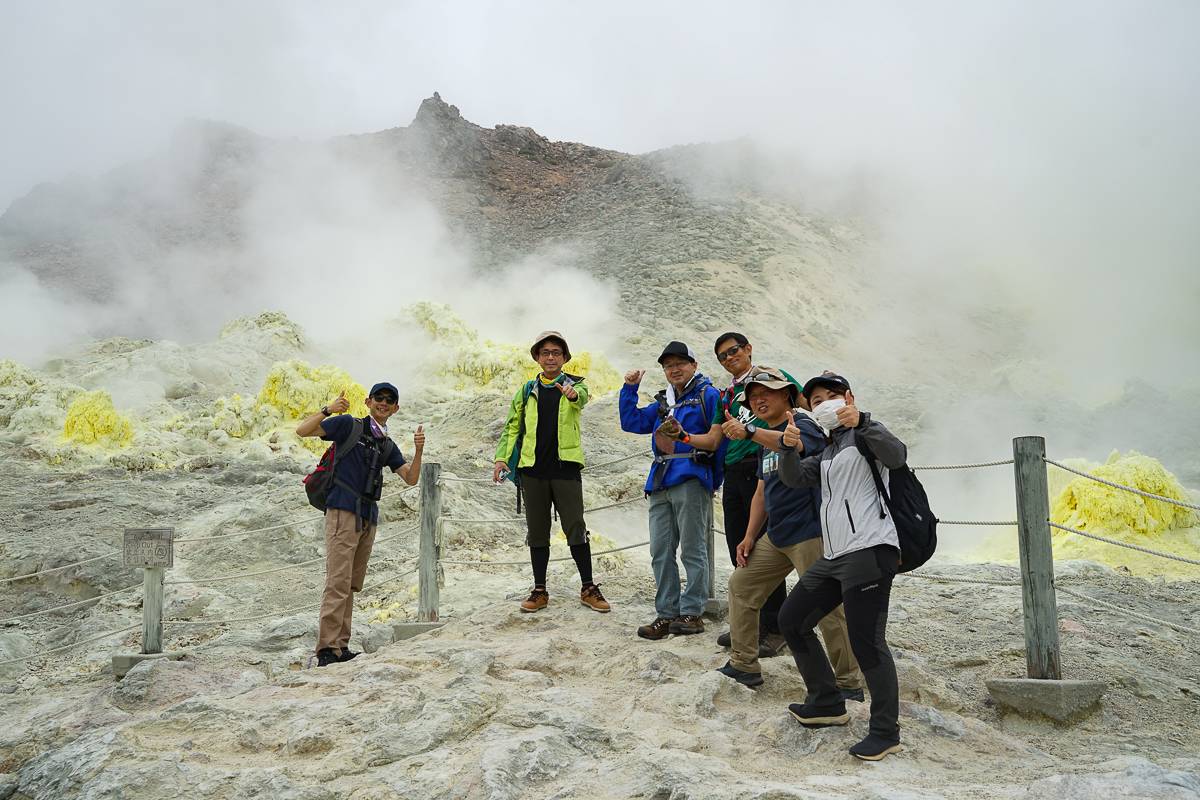
We made a lunch stop at Shari, one of our favourite local cafes and potteries. Not only do they provide delicious pizzas baked in a stone oven, they also present the meals in their own hand made pottery, using the soil and firewood produced in Hokkaido. The owner family kindly showed us the kiln at work and explained to us the process of producing the pottery at the workshop. A wonderful improvised private tour!
Feeling both full from breakfast and fulfilled from our local encounters, we continued to travel to Shiretoko Utoro, our guide Gen’s home. Before checking into our accommodation, we called in the Shiretoko World Heritage Centre to study the Shiretoko 101 taught by the local specialist Gen. He’s lived in Shiretoko for the last 15 years, working for the brown bear management of Shiretoko in his previous career. Gen won’t step into the outdoors without bear spray on his belt, it’s a sign you can tell whether you are in a brown bear free area or at potential risk of encountering one!
Day 4 – Shiretoko on the land and from the sea
We had an early start this morning, finishing breakfast before 7am, and hurried to the Sake (Salmon) Terrace located at the back of Shiretoko World Heritage Centre. This new establishment is actually a fishery facility, the ground floor of which is only open to the working fishing personnel.
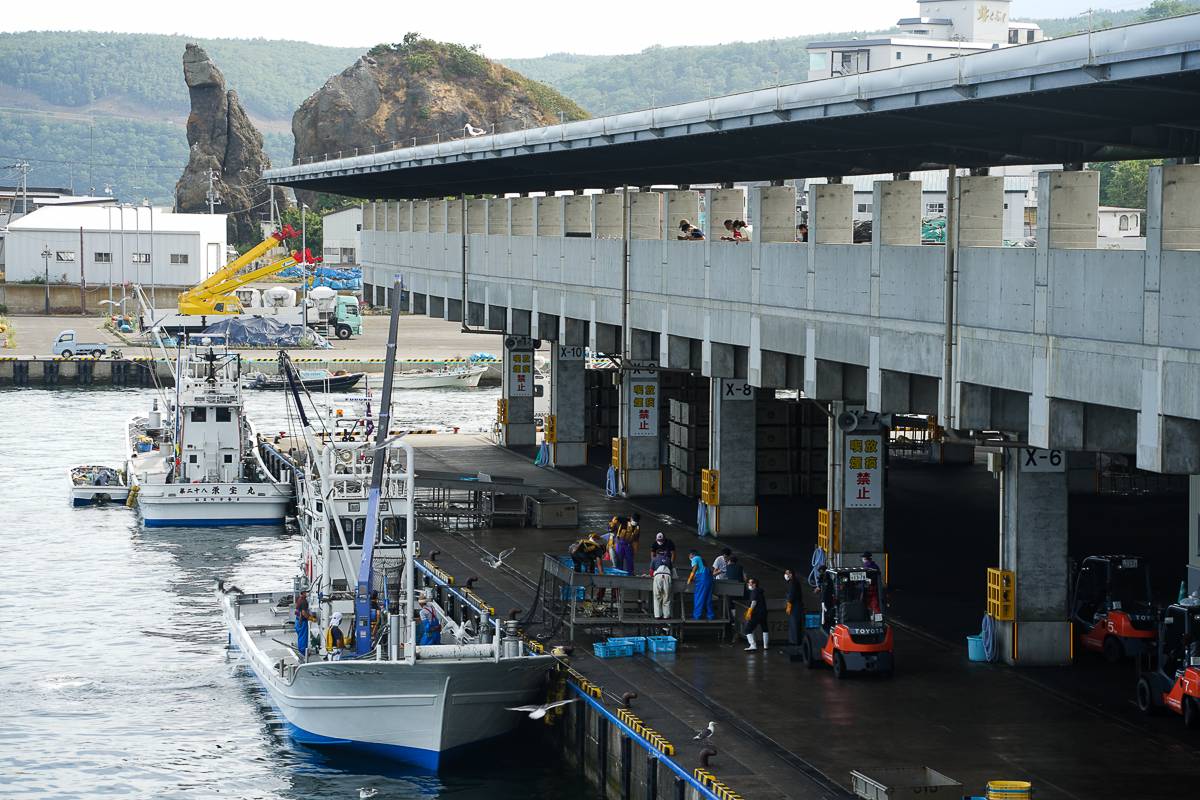
The second floor, however, is open to the public, providing a clear and close outlook of the unloading of the day’s catch. According to the local source Gen managed to obtain, the unloading was going to happen between 7:00am and 7:30am today. The morning sunlight and sea breeze felt good on my face while we waited for the boats’ return.
It was especially interesting to watch the process with Gen’s commentary, to know what’s happening and why they do things in certain ways. It was like watching rugby for me, the more I knew the rules, the more spectacular it seemed!
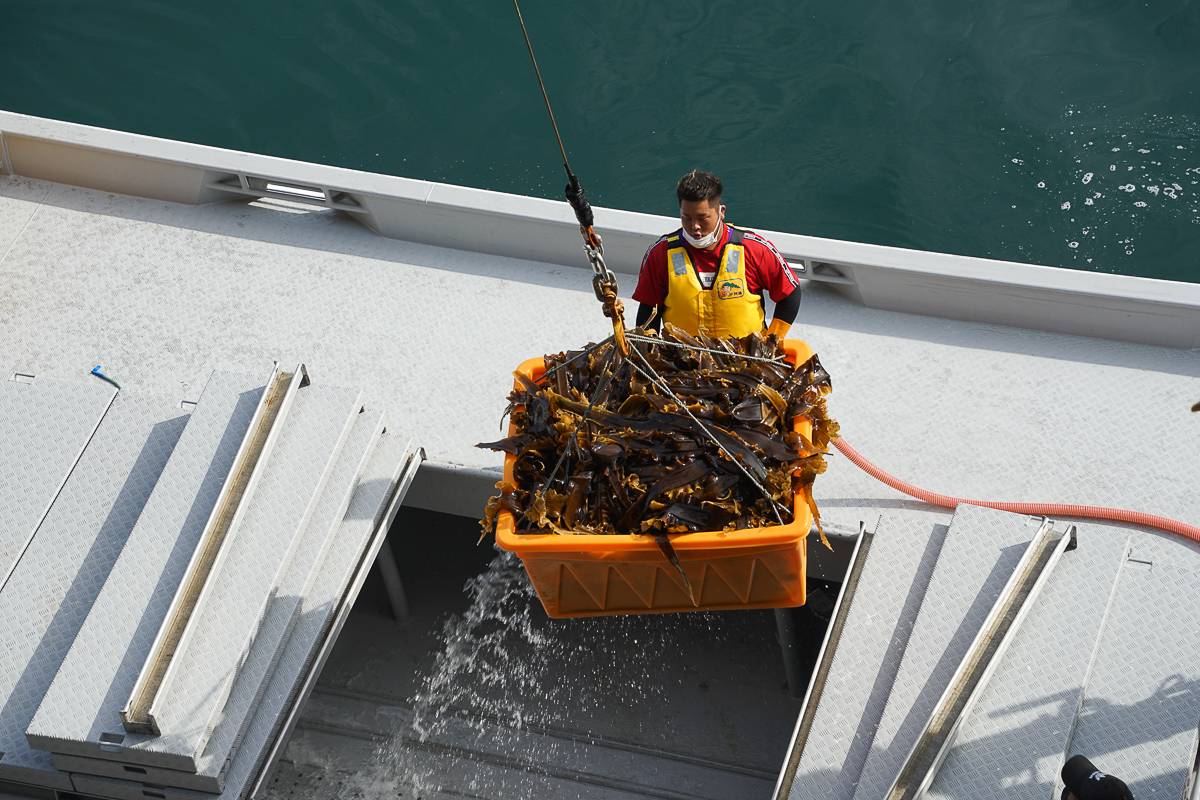
We then made our way further into Shiretoko Peninsula. Shiretoko Five Lakes (Goko) is one of the most popular sites in Shiretoko, as the visitors can enjoy the views of the Shiretoko mountains and the five lakes, while walking on the well-established, one way trail.
We planned to walk the biggest circuit, marking all the five lakes, but just before we made it to the fourth lake, we saw everyone reverting.
There was a sighting of a Brown Bear almost at the end of the Five Lakes trail, and immediately the news was spread among the guides on the trail by radio. We were all encouraged to walk back regardless of whether being on guided groups or independent walkers. I was rather impressed by the effectiveness of the handling of any situations and the idea of “being in Brown Bear territory” was turned into a tangible reality!
We had lunch at Shiretoko National Park Nature Centre and watched the 20 min documentary film “The Limit”, in which Gen appears! It was a thought-provoking film about the boundary in the coexistence between Brown Bears and humans in Shiretoko, a kind of topic you’d like to think deeply about when visiting Shiretoko.
Driving over the Shiretoko pass to the other side Rausu was as beautiful as always, sweeping by the iconic Mt Rausu. The weather on the Rausu side was just as Gen had predicted; sunny and hot on the Utoro side, and cloudy and cool on the Rausu side. We carried on to Aidomari without making a stop in the town centre of Rausu, to board the afternoon bear watching cruise with Captain Noda san.
It wasn’t my first time on this boat but I was thrilled to experience it again. Noda san’s fishing boat may be small but the size allows us to scout the rocky coast of Rausu freely and safely. There are old sheds still standing on the coastline, which used to accommodate workers and their families for the summer during the fishing season.

We travelled along the coastline aiming for the tip of peninsula Cape Shiretoko. When we made what seemed a half way through to Cape Shiretoko, we did see a young bear having a feast on seagulls’ eggs on the rocky cliffs. The seagulls were making a lot of noise flying above the hungry bear, but he didn’t seem to care about the noise at all, continuing to fill his stomach with an all-you-can-eat!
While cruising, we also spotted a couple of White-tailed Eagles, Japanese Deers, another adult bear traversing a green vegetation into the woods, probably going home for the day. We were all impressed by everything we got a sight of, and thanked Noda san for an unforgettable adventure experience.

Day 5 – Shiretoko Rausu whale & dolphin watching cruise
This morning we departed our comfortable lodge by foot to head for the Rausu port, where we got on another wildlife watching cruise with Rausu’s popular figure Captain Hasegawa san. The cruise today took us further offshore of the Rausu coast, in search of marine mammals inhabiting the deep trench. The talk given by Hasegawa san and his colleague on board was very entertaining to listen to.
The sky was clear that we were able to see the island of Kunashiri, one of the Kuril Islands under Russian control, which we could not view on the day before.
Within less than half an hour since we departed the port, we had the first sighting of a sperm whale. It seemed that we were able to observe the entire breathing of this one, watching it blowing for a good 5 mins or so. As you can imagine, the dive was spectacular. The angle the boat was positioned was just perfect, thanks to the skillful skipper Hasegawa san.
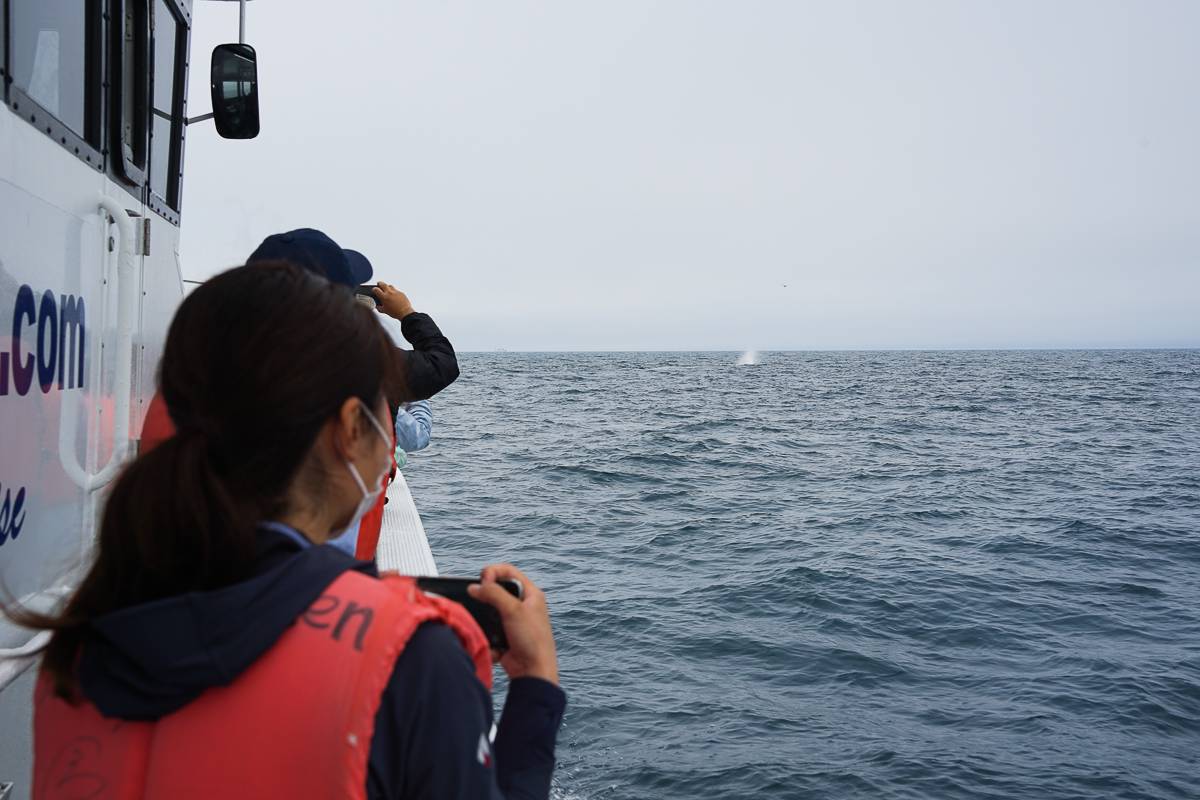
From there for two hours was exhilarating virtually every minute! We were able to sight seven more whales, some of which were distant but we could see the spouts with the naked eye, which Captain Hasegawa san himself was even surprised at, because of no sighting on the day before. One of the eight whales we saw was swimming in Russian territory, which made us realise how close we were to the frontier.
On the way back to the Rausu port, our boat had a company of a flock of Dall’s Porpoises keeping up with the speed of the boat. We also saw a Black-Footed Albatross, with the heavy-looking body, which seemed difficult to take off like a flash. Once the cruise finished at the Rausu port, we farewelled Hasegawa san in his cockpit and took a photo of memory with him. Hasegawa san is the kind of character you’ll regret missing when visiting Rausu.
We had lunch and the afternoon on our own, for everyone to enjoy their solitude in the peaceful fishing town, and later regrouped to dine out at a local izakaya in the evening.
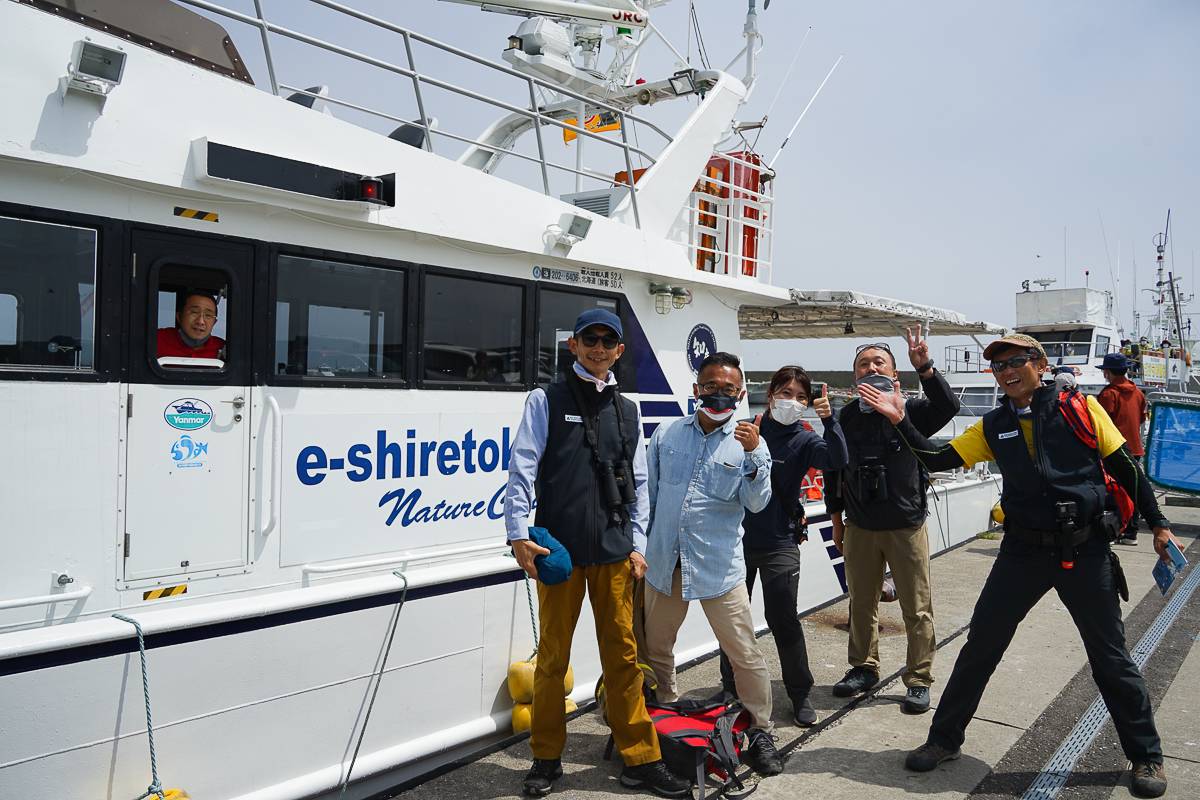
Day 6 – Wild souls in Nakashibetsu & Yoroushi
Saying goodbye to Shiretoko, we left for the farming country of Nakashibetsu, with our plan to do some easy hiking on the trail built around the local dairy country.
We made our first stop at the Saeki Farm, run by the Saeki family. When you talk to someone in this region about hiking, mountain biking, camping, anything to do with the outdoors, the name of Saeki san gets talked about.
In his seventies, but very energetic, creative, and an artist himself, Saeki san’s farm is worth visiting and staying overnight if you can. The farm is fun in lots of ways; the barn which he built by hand back in time is now converted into accommodation, the camping ground, the sauna, and the galleries that display carvings and woodcut arts created by local artists.
Last but no less important, he initiated building the Kitanemuro Ranch Way trail with a team of local volunteers, which runs through the Saeki Farm.

Our group toured around the farm guided by Saeki san and decided to start setting up a BBQ lunch early, and later do the walk near Mt Moanyama to Yoroushi Onsen. We had done our grocery shopping in Rausu so we could enjoy more of the diverse seafood of Shiretoko. It was nice to have the company of Saeki san during our lunch, sharing his stories and dreams about how he would like to make even more contributions to local communities.
After our satisfying lunch in the outdoors, we said our farewells to the Saeki Farm to do some exercise. We started at the trailhead for Mt Moanyama planning to finish our walk near our accommodation in Yoroushi. The cloud above our head was getting darker then, but we were hoping we would make it to the finish without getting wet with rain. We realised our hopes were too optimistic when the rain bucketed down on us!
We soon headed back to our van. It was a hot day and the rain kind of felt warm so I decided not to put a rain jacket on, so did the three others in our group. But the rain was so heavy we were wet from head to toe but still had fun with the rare occasion anyway. We never do the same when it rains while hiking in higher altitudes in Hokkaido, as it can cause hypothermia, but the warm rain in lowland felt like a diversion of the short summer.

How relieved it felt to have a roof over our heads when we arrived at our accommodation in Yoroushi Onsen. The staff gave us a warm welcome even though we were soaking wet, and brought us towels to dry our feet. They offered to dry our shoes overnight, using their shoe-driers. I never appreciated so much of the existence of shoe-driers in my life!
The special feature of this inn Yuyado Daiichi in Yoroushi Onsen is that there is a stream running just by the lobby and the dining area, where a Blakiston’s Fish Owl or two come to feed regularly. Remember owls are nocturnal, so being able to wait for their appearance comfortably indoors, is something we all felt appreciative of.

Our group hung around on the comfy sofas in the lobby after we enjoyed the delicious dinner. Some of us even took a nap. At around 10pm, Kazu took notice of the silence over the dining area, where people were noiselessly looking at an owl through the windows in the dark. The owl was standing still on a rock in the stream, only every now and then turning its head around. I marvelled at witnessing the life force of this endangered species feeding in the wilderness so closely, yet without disturbing it.
I went to bed at around 12am but people who had taken a nap stayed up a little later and was able to see the owl even more closely! We learned that was the best tactic for owl spotting at this location!
Day 7 – More birdlife and sea otters at Kiritappu
We found our shoes dry and neatly laid out at the entrance by the time we were leaving. One of the staff even got out of the door and sent us off with a smile and wave. Our group headed for Cape Kiritappu facing the Pacific Ocean, where we hoped to sight sea otters breeding and inhabiting throughout the year since what it seemed in 2016.

While driving, by luck we were able to sight from the side of the road, a couple of Red-crowned Cranes feeding calmly. The Cranes were once thought to have become extinct, but the number has recovered to approximately 1,800 due to community conservation efforts.
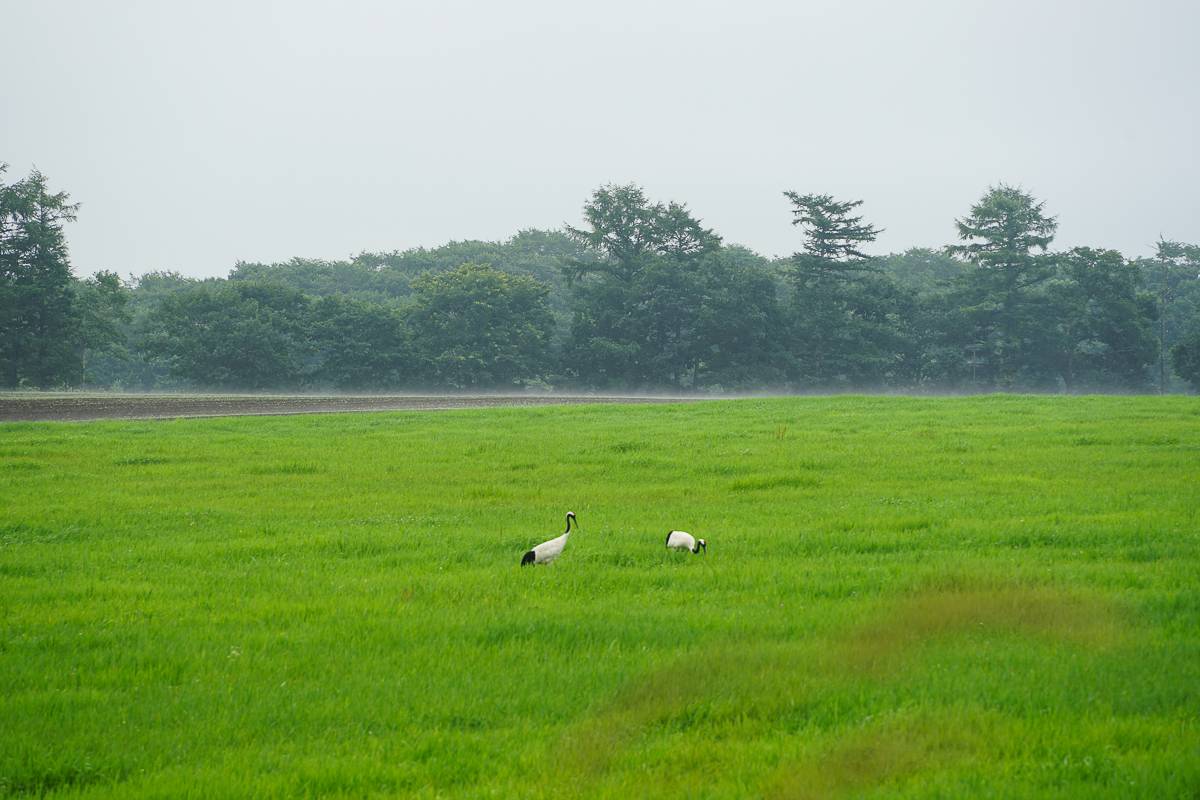
Kiritappu in Hamanaka is known for its fisheries. Shrimp, salmon, clam shells, oysters, kelps and sea urchins are caught in the sea off Kiritappu. The abundance of these make Kiritappu a nice home for the wild sea otters; plenty of food to feed a small sized family! Kiritappu, when we got there, was covered in mist as its name claims.
We strolled on a trail along the coastline toward the tip of the cape, looking for any sign of sea otters floating on the surface of the ocean. It was a little windy too, but comfortable enough to walk in short sleeves. When we got almost at the end of the trail, there we went, the black dots were moving fast towards the rocky beach of Kiritappu.
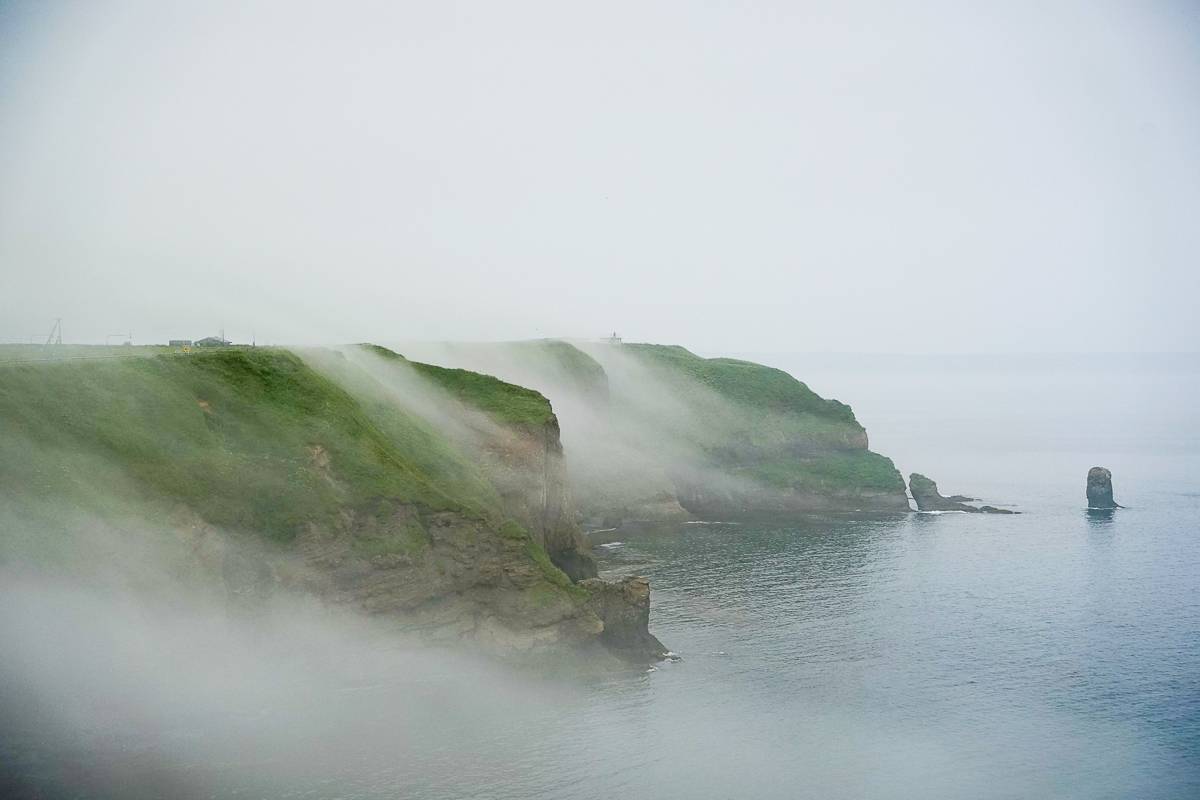
There seemed to be only two sea otters at first, but as they swam closer towards us, we could see a calf swimming so closely to the mum, jamming and rolling over each other. It was a family of three, ever entertaining to watch, leaving us not wanting to move on. It was the cutest wildlife moment of this trip!
We bid farewell to the sea otters, had lunch in Kiritappu and carried on to the Kiritappu Shitsugen, where we were joined by our canoe guides Urita san and Ashida san. Kiritappu Wetland is not as large as the Kushiro Shitsugen, but the ecological significance is also recognised by Ramsar Convention. The river channels seem more compact and complex, for the canoeing experience I reckon it’s more fun sweeping through the wetland vegetation.
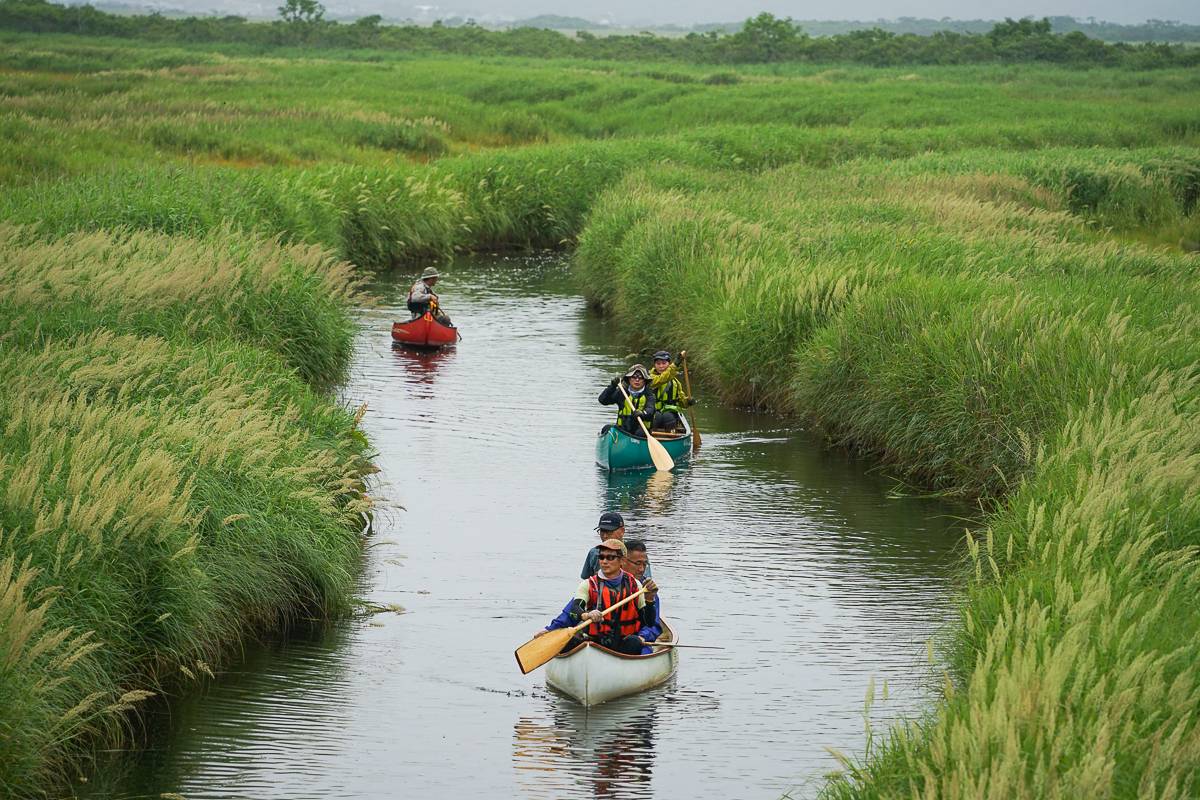
We took off on our canoes with excitement about what else we are going to see in this intact wetland. When we got out to an open estuary, Ashida san, who were paddling just beside us, told us there’s a flock of Common Greenshanks on a mound of sand. They were quite alert, as we approached them quietly, they flew away immediately, never giving us a chance to observe them still.
We landed on a secret sand beach where Ashida san offered us tea made of birch sap and home baked cookies. It was a grey day but the colourful cups gave the team a good cheer. On our journey back, a female young Japanese deer held us a show. Nothing alert like the greenshanks, she fearlessly munched away on the grass, only a few metres ahead of our canoe, even giving a look at the camera.
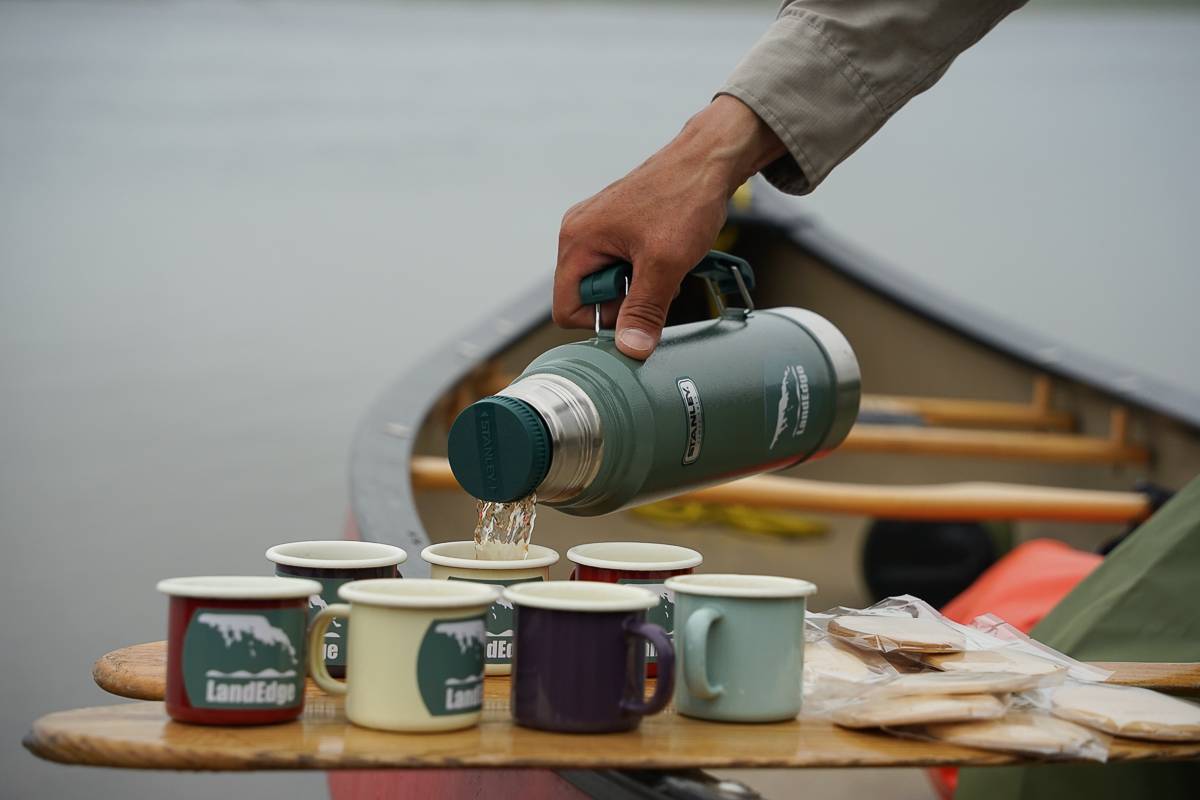
The two hours of paddling in the tranquil nature finished before I knew it. We thanked and said our goodbye to Ashida san, and headed home together with Urita san, whose home was our lodging for this night. A former fisherman, Urita san, is another key person of this community, as he runs a non-profit organisation to protect and preserve the wetland Kiritappu Shitsugen.
You can easily tell that he’s passionate about what he does and his caring for Kiritappu Shitsugen is inspirational. He shares his stories with the guests, so we can gain a better understanding of the ecological importance of the wetland and the value of handing it over to the future generations. We celebrated the final night together with him, sharing the memorable moments of our week adventure.
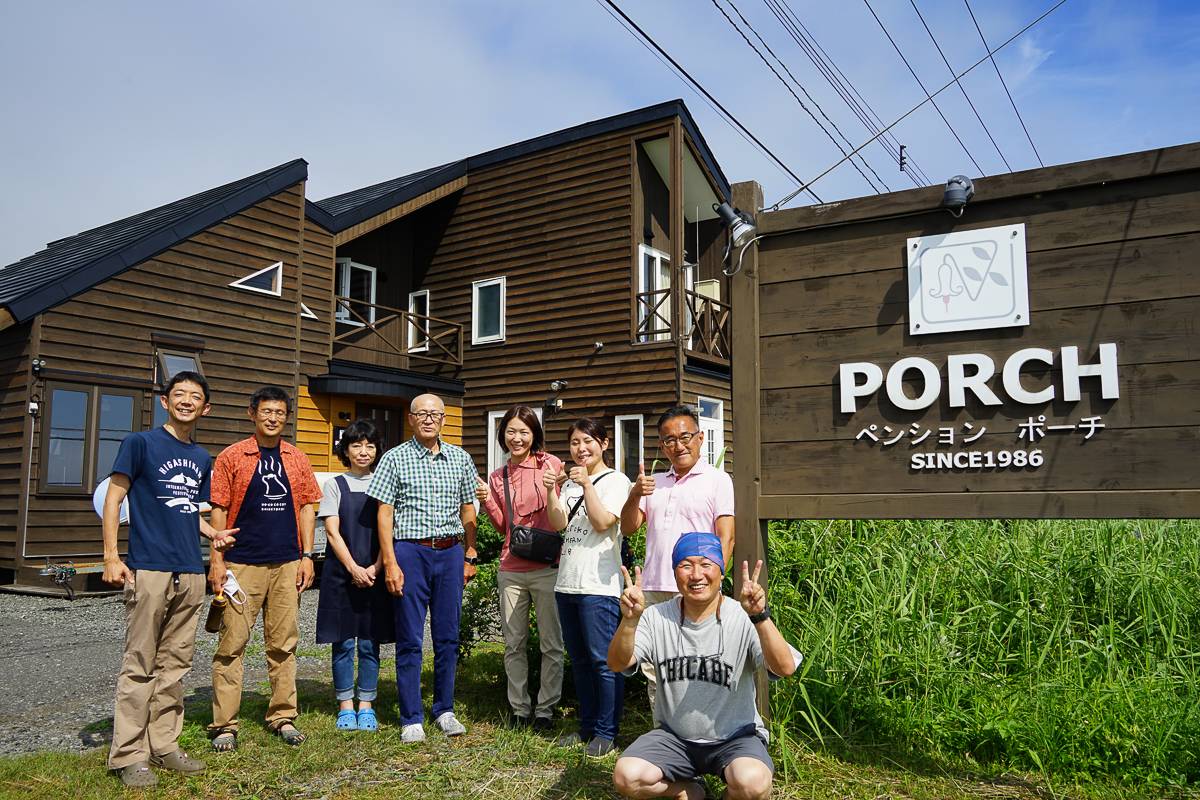
Day 8 – Farewells
After a homely breakfast, we bid farewell to Urita san and his wife, and headed for Kushiro travelling along the coastline of Akkeshi. We dropped off one of the fellow travellers at Kushiro Airport first and then the rest of the team at Kushiro Station. A week-long adventure really builds bonds among the group, and always gives me a mixed feeling when putting a period at the end of a trip. Sad to end fun touring in the outdoors of Hokkaido I love, and a relief that I don’t have to check phone chargers and toothbrush left behind in rooms!
Having completed our Japan’s Far East 8 Day Wildlife & Adventure Tour this time made me feel hugely proud of my home Hokkaido. A lot of people go overseas to experience wildlife encounters, including myself, with my first whale watching done at Kaikoura in New Zealand. But look at what we have on our own island! If you love the wildlife and the local encounters like I do, I am sure that this itinerary gives you many opportunities to fulfill your appetite.
I look forward to showing you off the wildlife and the wild dreams of our beautiful people!

See more from our Japan’s Far East Adventure
Ready to find out more?
See our Hokkaido hiking, cycling & nature tours